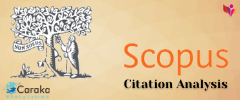Eradicating Al-Qur'an Illiteracy of Prospective Primary School Teachers
Abstract
Keywords
Full Text:
PDFReferences
Abdou, S. M., & Rashwan, M. (2014). A Computer Aided Pronunciation Learning system for teaching the holy quran Recitation rules. In 2014 IEEE/ACS 11th International Conference on Computer Systems and Applications (AICCSA) (pp. 543–550).
Abdullah, A.-R. S., & Malkawi, F. H. (1994). The Effect of the Time Factor on Learning the Recitation of the Holy Qur’an: An Experimental Study. Journal of Islamic Studies, 6(2), 33–313. Retrieved from https://doaj.org/article/c3c52470aa4b460e90cd8c85e3d6c9f8
Adam, Z.A. (2008). Pengaruh Tingkat Penguasaan Baca Tulis Al-Qur’an terhadap Prestasi Pendidikan Agama Islam Siswa di SMA Negeri 1 Pangkajene Kabupaten Pangkep. UIN Alauddin Makassar.
Adelman, C. (1993). Kurt Lewin and the Origins of Action Research. Educational Action Research, 1(1), 7–24. https://doi.org/10.1080/0965079930010102
Al-Nasa’i, A. al. (1991). Sunan al-Nasa’i. Cet. II. Halab. Maktab Al-Matbu ‘at Al-Islamiyah, 1406.
Arifin, T. (2017, 14 December). 54 % Muslim Indonesia Buta Huruf Al-Qur’an. Pikiran Rakyat. Retrieved from https://www.pikiran-rakyat.com/nasional/2017/12/14/ironis-54-muslim-indonesia-tak-bisa-baca-alquran-415880
Avalos, B. (2011). Teacher professional development in teaching and teacher education over ten years. Teaching and Teacher Education, 27(1), 10–20.
Babamohamadi, H., Sotodehasl, N., Koenig, H. G., Al Zaben, F., Jahani, C., & Ghorbani, R. (2017). The effect of Holy Qur’an recitation on depressive symptoms in hemodialysis patients: A randomized clinical trial. Journal of Religion and Health, 56(1), 345–354.
Bukhori, M. bin I. bin M. Al. (1992). Shahih Al Bukhari. Beirut Libanon: Darul Qurub.
Capobianco, B. M., & Feldman, A. (2006). Promoting quality for teacher action research: lessons learned from science teachers’ action research. Educational Action Research, 14(4), 497–512. https://doi.org/10.1080/09650790600975668
Castle, K. (2006). Autonomy through pedagogical research. Teaching and Teacher Education, 22(8), 1094–1103.
Clarke, D., & Hollingsworth, H. (2002). Elaborating a model of teacher professional growth. Teaching and Teacher Education, 18(8), 947–967.
Creswell, J. W. (2002). Educational research: Planning, conducting, and evaluating quantitative. Prentice Hall Upper Saddle River, NJ.
Darwis, R. S. (2016). Membangun Desain dan Model Action Research dalam Studi dan Aksi Pemberdayaan Masyarakat. KOMUNIKA, 10(1), 142–153.
Departemen Agama, R. I. (2005). Al-Quran dan Terjemahannya” Al-Jumanatul’Ali. Bandung: CV Penerbit J-Art.
Fadhillah, H. (2016). Pengaruh Membaca Alquran Terhadap Kestabilan Emosi Siswa Kelas XI SMA IT Abu Bakar Yogyakarta. Jurnal Riset Mahasiswa Bimbingan Dan Konseling, 5(8).
Ghiasi, A., & Keramat, A. (2018). The effect of listening to holy quran recitation on anxiety: A systematic review. Iranian Journal of Nursing and Midwifery Research, 23(6), 411.
Hanafiah, N., & Suhana, C. (2009). Konsep strategi pembelajaran. Bandung: Refika Aditama.
Hanbal, A. I. (2001). Musnad al-Imam Ahmad ibn Hanbal. Beirut: Mu’assasah al-Risalah.
Husna, M. (2015). Hubungan Kemampuan Membaca Al-Qur’an dengan Prestasi Pendidikan Agama Islam Peserta Didik Kelas VII SMP Negeri 2 Sungguminasa Kabupaten Gowa. Universitas Islam Negeri Alauddin Makassar.
James, M., & McCormick, R. (2009). Teachers learning how to learn. Teaching and Teacher Education, 25(7), 973–982.
Jefferson, R. N. (2014). Action Research: Theory and Applications. New Review of Academic Librarianship, 20(2), 91–116. https://doi.org/10.1080/13614533.2014.921536
Joyce, B. Weils, M. Calhoun, E. (1996). Models of Teaching. USA: Alyn and Bacon.
Katsir, I. (2000). Tafsir Ibnu Katsir. Mesir: Dar al Kutub.
Korthagen, F. A. J. (2010). Situated learning theory and the pedagogy of teacher education: Towards an integrative view of teacher behavior and teacher learning. Teaching and Teacher Education, 26(1), 98–106.
Korthagen, F. A. J. (2007). In search of the essence of a good teacher: towards a more holistic approach in teacher education. 2002.
Mar’i, A. S. B. (2018). Using Multimedia Program in teaching Recitation of the Holy Qur’an among eighth Grade Students in Light of their Self-Efficacy and its Effectiveness of Learning Motivation. مجلة الجامعة الإسلامية للدراسات التربوية والنفسية, 26(4).
Messiou, K. (2018). Collaborative action research: facilitating inclusion in schools. Educational Action Research, 0(0), 1–13. https://doi.org/10.1080/09650792.2018.1436081
Niemi, R. (2018). Five approaches to pedagogical action research. Educational Action Research, 0(0), 1–16. https://doi.org/10.1080/09650792.2018.1528876
Nisbet, J., & Shucksmith, J. (2017). Learning strategies. Routledge.
Novak, J. D., & Gowin, D. B. (1984). Learning how to learn. Cambridge University Press.
Nurzaman, I. (2014). Efektivitas Penggunaan Metode Bil Hikmah Terhadap Tingkat Kemampuan Membaca Al-Quran Anak Usia Dini. Tarbawy: Indonesian Journal of Islamic Education, 1(1), 33–43.
Olson, M. R., & Craig, C. J. (2001). Opportunities and challenges in the development of teachers’ knowledge: The development of narrative authority through knowledge communities. Teaching and Teacher Education, 17(6), 667–684.
Penlington, C. (2008). Dialogue as a catalyst for teacher change: A conceptual analysis. Teaching and Teacher Education, 24(5), 1304–1316.
Shihab, Q. (1992). Membumikan al-Quran, Fungsi dan Peran Wahyu dalam Kehidupan Masyarakat. Bandung: Mizan.
Sophya, I. V. & S. M. (2014). Metode Membaca Al-Qur’an. Elementary Islamic Techer Journal, 2(2), 335–349.
Srijatun. (2017). Implementasi Pembelajaran Baca Tulis Al-Qur’an Dengan Metode Iqro Pada Anak Usia Dini Di RA Perwanida Slawi Kabupaten Tegal. Nadwa , Jurnal Pendidikan Islam, XI(1), 25–40.
Supriyadi, T., & Julia, J. (2019). The Problem of Students in Reading the Quran: A Reflective-Critical Treatment through Action Research. International Journal of Instruction, 12(1).
Syaifullah, M. (2017). Penerapan Metode An-Nahdliyah dan Metode Iqro’dalam Kemampuan Membaca Al-qur’an. Jurnal Kajian Ilmu Pendidikan.
Yahya, W. (2010). Bil Hikmah (Metode Terpadu) Cepat Membaca Al-Qur’an Buku I. Bandung: Fakultas Dakwah UNISBA bekerja sama dengan Baitul Hikmah.
Zech, L. K., Gause-Vega, C. L., Bray, M. H., Secules, T., & Goldman, S. R. (2000). Content-Based Collaborative Inquiry: A Professional Development Model for Sustaining Educational Reform. Educational Psychologist, 35(3), 207–217. https://doi.org/10.1207/S15326985EP3503_6
DOI: https://doi.org/10.53400/mimbar-sd.v6i2.16583
Refbacks
- There are currently no refbacks.
Copyright (c) 2019 Mimbar Sekolah Dasar

This work is licensed under a Creative Commons Attribution-ShareAlike 4.0 International License.
View Mimbar Sekolah Dasar Stats


.png)

.png)
